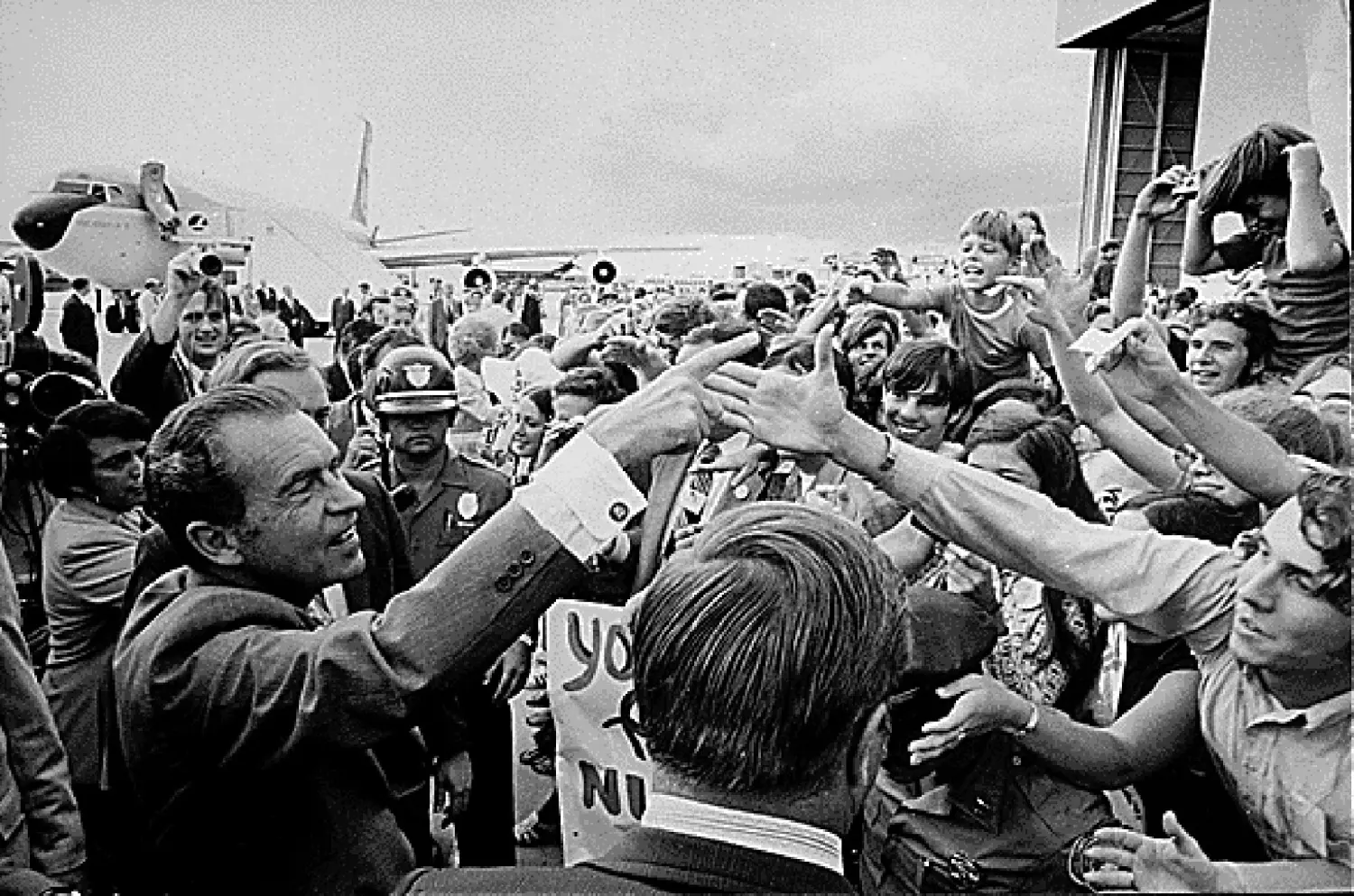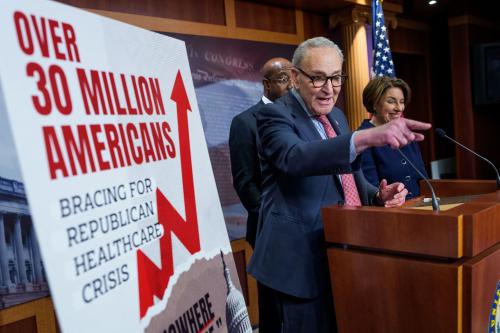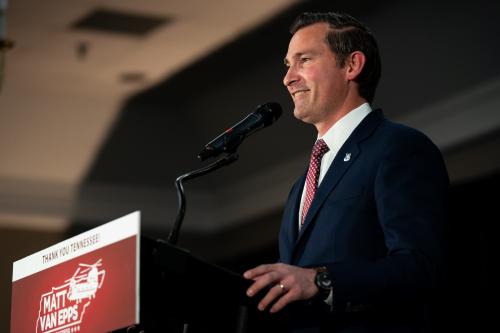Editor’s Note: In “The Nixon Sightings,” Steve Hess recalls a five key moments in his time working with Richard M. Nixon. Each vignette offers a peek into some of the events that drove a young Senator from California to the Oval Office. This series was written as background to Hess’ new book The Professor and The President: Daniel Patrick Moynihan in the Nixon White House (Brookings Press, December 2014), a “dramatic narrative” of events in 1969-1970, told in the present tense.
“There is something about a national convention that makes it as fascinating as a revival or a hanging,” recalled H.L. Mencken, the sage of Baltimore. “Suddenly there comes a show so gaudy and hilarious, so melodramatic and obscene, so unimaginably exhilarating and preposterous that one lives a gorgeous year in an hour.”
But Mencken’s memory was of politics before most states chose their delegates in primary elections and all that was left for the national convention to do is formally tell us what we already know, approve a platform, and listen to the nominee tell us why he/she should be our president.
In 1952, however, the delegates to the Republican convention would not know when they arrived on July 7 who they would nominate on July 9. (This also was true at the Democratic convention, which began on July 21. No delegates since then can make this statement.)
And I was there: a student at the University of Chicago, in love with politics, and about to be in the midst of history being made!
Only 14 states held primaries that year. Other states chose to support a “favorite son” candidate, who would be happy to bargain. The contenders, Dwight Eisenhower and Ohio Senator Robert Taft, arrived dead-even in Chicago; their strategists’ skills would determine the winner. Moreover, an estimated 71 million viewers were looking over their shoulders: for the first time the conventions were live on TV, anchored on CBS by a new star, Walter Cronkite.
As a volunteer with the New York County Republican Committee (Tom Dewey’s organization), I was assigned to drive delegates from their downtown hotel to the Chicago amphitheater, Halsted at 42nd Street, up against the Union Stock Yards. (It was a great place if the wind wasn’t in the wrong direction.) What I hadn’t volunteered was that I have a terrible sense of direction. On my first run, the passengers, one of whom I remember as being Louis Lefkowitz (later a distinguished New York Attorney General), chose to walk the last dozen blocks. I was thanked, fired, and rewarded with a set of convention tickets.
One ticket was great. Two tickets was infinity. My summer roommate, Hank Scherer, a Yalie with Connecticut connections, also had a ticket. Given casual 1952 security, this meant that two of us went in, one came out with two tickets, and two went in, and so forth until all our friends were inside.
We marched around the convention floor waving placards and singing the song Irving Berlin had written for us: I Like Ike/I’ll shout it over a mike/Or a phone/Or from the highest steeple/I Like Ike/And Ike is easy to like/Stands alone/The choice of We the People.
While we were endlessly singing, the Eisenhower forces accused the Taft forces of stealing delegates, challenging the credentials of Georgia, Louisiana, and Texas delegations. “Thou shall not steal,” we chanted. From the podium, Illinois Senator Everett McKinley Dirksen, speaking for Taft’s side, pointed his finger down at Tom Dewey of the Eisenhower camp, the party’s 1944 and 1948 candidate. He intoned, “We followed you before and you took us down the path to defeat.” The convention hall erupted, deafening applause, deafening boos.
From the TV booth: “There’s a great deal of confusion out there. There goes a fight. There’s a photographer getting in trouble. I don’t know who is hitting whom. Somebody got knocked down, but it’s pretty hard to tell who it was. The officers were in the middle of it—they really are having a time here tonight.”
It was wonderful!
Eisenhower won the seating contest and, as a result, the nomination on the first ballot.
The next day he chose Richard Nixon, the controversial young senator from California, to be his vice presidential running mate. Inside the hall I heard an intercom voice saying which gate Nixon would be entering. I ran to that gate. The door opened.
Richard Nixon, his eyes shining and apparently unfocused, grabbed my hand and shook.
(Even after I became Nixon’s speechwriter, I never mentioned to him that I was the young man at the door, July 10, 1952.)
The Brookings Institution is committed to quality, independence, and impact.
We are supported by a diverse array of funders. In line with our values and policies, each Brookings publication represents the sole views of its author(s).





Commentary
The Nixon Sightings, Part I: The 1952 Republican Convention
December 15, 2014